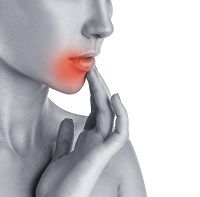Article
Case Study Presents Novel Treatment Option for Patients with Pemphigus Vulgaris
Author(s):
An increasing number of patients worldwide with severe pemphigus vulgaris (PV) are showing little or no response with conventional steroid treatment; however, a new treatment may become an option.

An increasing number of patients worldwide with severe pemphigus vulgaris (PV) are showing little or no response with convention steroid treatment; however, a new treatment may become an option.
PV is a relatively rare autoimmune disorder that involves intraepithelial blistering and sores of skin and mucous membrane, typically affecting older patients. PV is usually treated with corticosteroids with or without adjuvant therapies like immunosuppressives and immunomodulators. Not only does the current treatment come with potentially severe side effects, but many patients do not respond to it.
An case study recently published in the Indian Journal of Dermatology suggests that a different treatment — therapeutic plasma exchange (TPE) in combination with rituximab – not only holds promise for these patients, but can be administered with better results and more cost-effectively than a comparable course of four injections of rituximab or one cycle of intravenous immunoglobulins (IVIG).
TPE is a technique in which the plasma is separated from blood, discarded in total, and replaced with a substitution fluid such as albumin or with plasma collected from healthy donors. It is typically combined with immunosuppressive treatment, such as IVIG, prednisone and azathioprine, to avoid rebound effect and to maintain the improvement. There is no standardized length of frequency of treatment. The study authors posited that because PV generally correlates with the levels of circulating autoantibodies, the removal of these antibodies constitutes a reasonable therapeutic approach. TPE has shown results in refractory or severe cases of PV.
A 65-year-old male presented with multiple blisters and erosions over more than 85% of his body, including oral mucosa, and a scalp with severe maggot infection. The patient had previous episodes of such lesions which subsided within three to four months after treatment with steroids and some unknown generic medications, but the disease returned and gradually worsened.
The clinicians administered TPE on alternate-day intervals for five sessions over a period of 10 days. The authors describe in detail how they monitored the patient and determined the amount of plasma to be exchanged. After the third session of TPE, Nikolsky sign (dislodgement of intact superficial epidermis by a shearing force, indicating a plane of cleavage in the skin) became negative and no new lesions appeared.
“The exudation from the lesions reduced drastically and dressings also started to remain dry,” the authors explained. “The lesions showed 60 to 70% re-epithelization and 90% healing after the last sessions. The oral lesions also healed completely, though little erosions on [the] back, anterior aspect of thigh and buttocks persisted.”
In order to prevent “rebound” antibody synthesis, the patient was given IV methyl prednisolone (1 gm/day) and cyclophosphamide (500 mg/day) for three consecutive days. At the end of the treatment, there was further improvement in the lesions and the patient was clinically stable.
The case mirrors earlier research showing that TPE can be effective as steroid-sparing therapy with a high response rate and good safety profile. The authors noted in this case that, despite evidence of sepsis in this patient, TPE was administered safely. The clinicians also noted that while immuno-adsorption is superior to plasma exchange in both safety and efficacy, the high cost of adsorbers is the major liming factor.
Thus, TPE “…is a useful intervention in patients with PV who are not responding to standard therapy or who require unacceptably high doses of steroids or immunosuppressant[s].”





